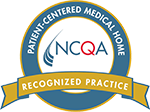Pediatric Postural Orthostatic Tachycardia Syndrome: What Parents Should Know
Your teenager complains that they get dizzy when standing and feel faint. They complain of nausea and vomiting but aren’t sick. And they’re sleeping a lot more than what is typical for a teen. You want the best for your child and are concerned about this sudden change in health. So you make an appointment with your child’s pediatrician and explain your concerns and her symptoms.
Pediatric Postural Orthostatic Tachycardia Syndrome (POTS) is a condition where the nerves in the body do not regulate blood flow as they should. It is believed to be a disorder of the autonomic nervous system, which governs heart rate, blood pressure, food movement through the gut, and sweating, to name a few.
Blood pressure throughout the body should stay at a certain level for the brain to function optimally, whether lying down, sitting, or standing. When a person stands, the blood vessels should constrict or tighten automatically. Constriction of the blood vessels keeps gravity from causing blood to pool in the legs and allows enough blood to keep the brain functioning properly. There isn’t enough blood flow to the brain in someone with POTS, so the heart speeds up, causing them to feel dizzy, lightheaded, or they may even pass out.
What Causes Pediatric Postural Orthostatic Tachycardia Syndrome (POTS)?
The risk for POTS typically begins around puberty and is most commonly seen in females (75-85% of cases). In most people (80%), symptoms improve or disappear by the early 20s. A known trigger of POTS is a viral infection. COVID-19 is one such virus that can cause POTS – even in people with mild or no COVID symptoms.
What are the Symptoms of POTS in Kids?
As mentioned, a variety of symptoms can occur in people with POTS. According to the American Academy of Pediatrics, POTS symptoms may include:
- Heart palpitations (racing heart)
- Dizziness or lightheadedness
- Fainting
- Extreme fatigue
- Chest discomfort
- Too tired for exercise
Other symptoms may include:
- GI symptoms such as nausea, vomiting, diarrhea, and cramping
- Muscle or joint pain
- Trouble sleeping
- Headaches – especially migraines
- Brain fog
- Blurred vision
- Anxiety or depression
- Cold extremities
- Heavy, painful, and prolonged menstrual periods
How is POTS Diagnosed?
If you suspect your teen may have POTS, call their pediatric provider to schedule an evaluation. Testing may include a complete physical exam, orthostatic vital sign measurements, and a tilt-table test. This test measures heart rate while lying down versus standing. If the heart rate increases 40 beats or more per minute within ten minutes of lying and standing, they may have POTS.
How is POTS Treated in Kids?
POTS symptoms are typically managed by:
- Increasing water intake to 60-80 ounces per day
- Adding salt to the diet to help retain fluid
- Getting up to 10 hours of sleep every night
- Eating a healthy diet and not skipping meals
- Avoiding caffeine
- Exercising
If your teen has mentioned having symptoms similar to those listed for POTS, please call our office to schedule an appointment. They must receive proper testing, so the right treatment is prescribed to help manage symptoms.








